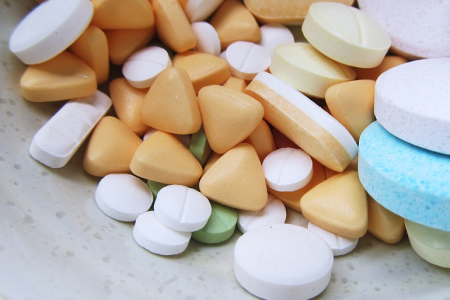Additional measures are possible for the development of new drug tests, for improving information and education about drugs and medicines, for providing information and education about driving under the influence of drugs and/or medicines, and about driving under the influence of laughing gas (nitrous oxide), and for improving the safety culture within companies.
New tests
The current saliva tests are better than the previous ones, but there is room for further improvement [53]. New drug tests that enable the easy and reliable detection of drug use in traffic are being developed. One of them is a reliable breath test for cannabis and other drugs [54] [55].
Information and education about medicines
Users of impairing medicines most often mention participating in traffic nonetheless, as they do not notice any effect on their responsiveness. By having people do an online responsiveness test before and after medicine use, they will gain insight into the effect of the medicines on their responsiveness and their fitness to drive [41]. In addition, the current provision of information about medicines could be improved by informing patients about the risks of medicine use step-by-step. This may be done by GPs or pharmacists [56] or the information may be presented on medicine packaging [57]. But effectiveness of information improvement is not guaranteed: in France, the introduction of pictograms on drug packaging only had a short-lived reducing effect on crash risk, while, in the long run, risk increased again [48]. GPs and pharmacists may also give patients some tips about how to recognise negative effects on their fitness to drive and how to self-test to what extent their medicines affect them [58]. Physicians should also, if possible, counteract negative effects on fitness to drive by prescribing less impairing medicines, and by prescribing limited dosages or by suggesting an appropriate time of intake (for example at the beginning of the night) [58].
Information and education about driving under the influence of laughing gas (nitrous oxide)
Research by Nabben et al. [59] brings to light that, when targeting the young, the following three starting points should be heeded in the prevention of and education about driving under the influence of laughing gas:
- When deciding on an approach, differentiate between groups of young people on the basis of their experience in using substances;
- Present an honest message;
- Pay attention to the risk that the aftereffects of a laughing gas intoxication may linger.
Informing and educating parents (of children aged 12 or over) is another way to prevent the use of laughing gas [59].
Safety culture companies; include drug tests?
Developing a safety culture and safety management are effective strategies to prevent professional drivers from crash involvement [60]. The safety culture could, among other things, entail transport companies testing their drivers for alcohol and/or drug use [60]. American companies report encouraging results of periodically testing their drivers for drug/alcohol use. These tests have resulted in some drivers getting caught, after which the companies have taken targeted measures and offered them further guidance [60].
For reasons of privacy, a Dutch employer cannot simply test employees for alcohol or drug use [61]. The Dutch Data Protection Authority that supervises processing of personal data says that testing employees for alcohol or drug use is only allowed after the relevant legal arrangements have been made (see autoriteitpersoonsgegevens.nl/nl/nieuws/testen-op-alcohol-drugs-geneesmiddelen-tijdens-werktijd-alleen-met-wettelijke-regeling).
